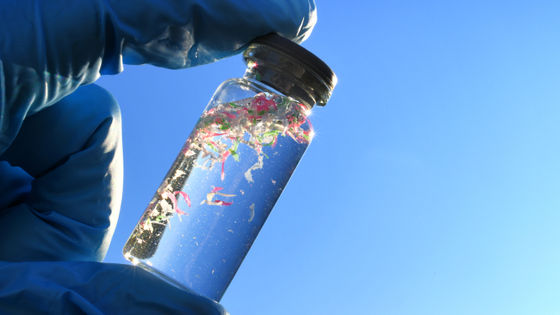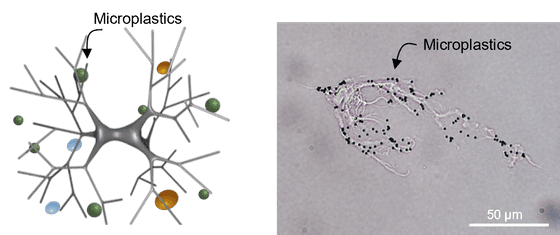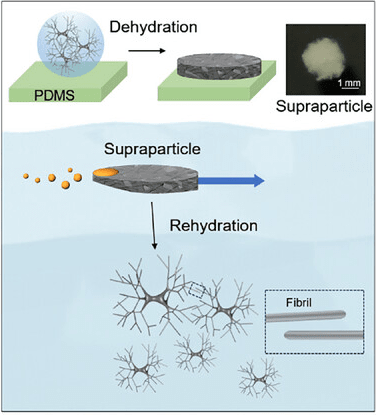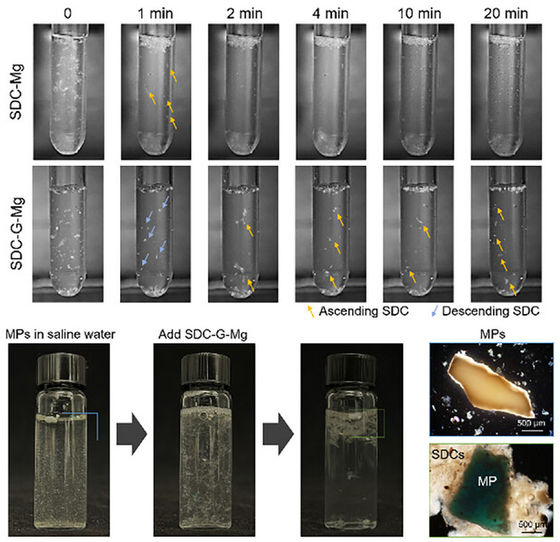Introducing a new 'micro cleaner' that can remove microplastics just by dropping it into water

Microplastics have raised concerns about their impact on health and the environment, as surveys have revealed that large amounts of plastic particles are present in
Designing of Self‐Dispersing Soft Dendritic Microcleaners for Microplastics Capture and Recovery - Hong - Advanced Functional Materials - Wiley Online Library
https://advanced.onlinelibrary.wiley.com/doi/10.1002/adfm.202423494
New Water Microcleaners Self-Disperse, Capture Microplastics and Float Up for Removal | NC State News
https://news.ncsu.edu/2025/03/26/cleaning-microplastics-in-water/
The microplastic removal agent announced by a research group at North Carolina State University in the academic journal Advanced Functional Materials dated March 25, 2025, is made from a biopolymer called 'soft dendritic colloid (SDC)' made from chitin , which is contained in shellfish shells and the exoskeleton of crustaceans.
The finely branched structure of SDC allows it to scrape together microplastics using the van der Waals forces , the same intermolecular forces that allow the soles of a gecko's feet to stick to a wall. In addition, thanks to the slightly positively charged nature of chitin, it can effectively adsorb negatively charged microplastics using electrostatic forces.

'The cleaning particles used in this study are made from chitosan, a biodegradable polymer made from chitin obtained from shellfish processing waste,' said Orin
However, it is difficult to spray SDC into large amounts of water containing microplastics, and the SDC entangled with microplastics sinks to the bottom of the water, making it difficult to recover.
The team first dried droplets containing SDC on the surface of a water-repellent material, solidifying them into small pellets, and then coated some of the pellets with eugenol , a plant-derived oil.
The research team applied the oil to reduce the surface tension of some of the SDC pellets, creating the Marangoni effect , or the so-called 'camphor boat effect.' As the pellets moved around on the water surface like a toy boat, they gradually dissolved in the water, dispersing the SDC evenly throughout the water.

The team then added magnesium coated with gelatin to the SDC. As mentioned above, SDC sinks in water, but when the gelatin slowly dissolves and the magnesium comes into contact with water, tiny bubbles form, causing the SDC to float.
This resulted in the development of a 'microcleaner' that automatically sprays a microplastic remover into water when it is placed in it. The remover entangles the plastic particles as they sink to the bottom of the water, eventually floating to the surface for easy collection.

The research team demonstrated that the microcleaner can collect microplastics of various sizes using seawater collected from Kamilo Beach in Hawaii, an area known for large amounts of plastic waste.

According to the research team, they also plan to process the collected microcleaner clumps into chitosan and produce microcleaners again.
'The collected scum could then be bioprocessed into chitosan, which could then be used to produce more microcleaners, potentially capturing even more microplastics,' Velev said.
in Science, Posted by log1l_ks